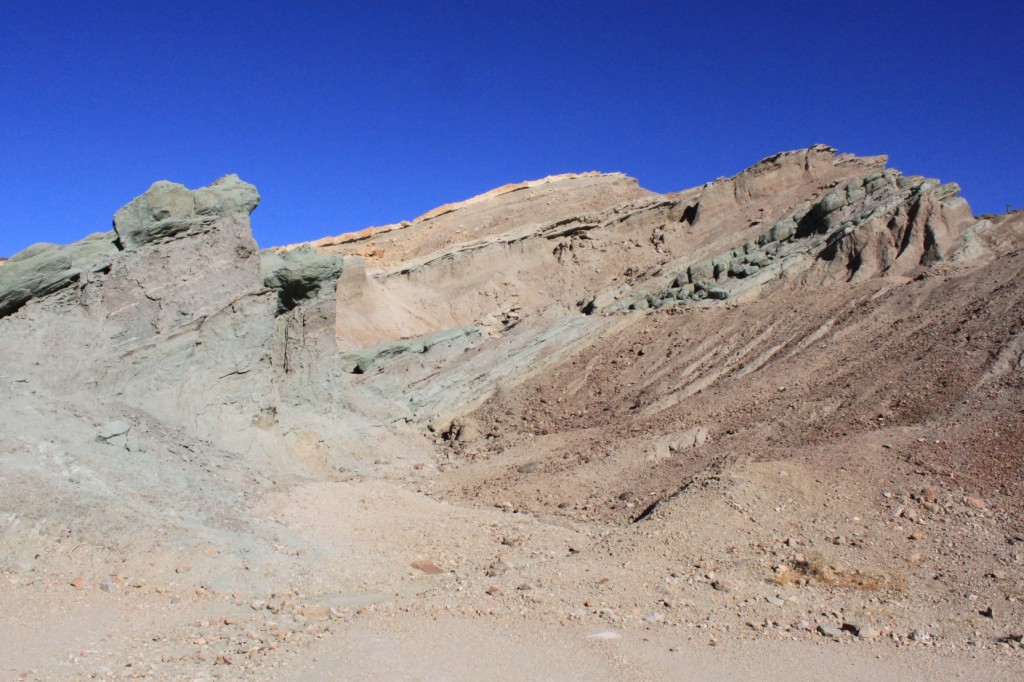Finally, I get to part 3 of our one-day Barstow road trip through the desert. Just to quickly review, we started from Barstow, first stopping at the abandoned Rock-a-Hoola water park, and then on out to Zzyzx Road, Soda Lake and the Mojave National Preserve. Looping back around to Barstow, we had time to briefly visit the Rainbow Basin Natural Area.
Located 8 miles north of Barstow, the area was declared a National Natural Landmark in 1972. The area is accessed by a one-way loop road. The BLM website says the road is not recommended for passenger vehicles. We, however, never consulted the website before our arrival since there were no signs informing us of this, we forged onward in our mini van. My unprofessional opinion is that is your vehicle has adequate clearance and you are not too fussy about it and you drive slowly, you’ll likely be fine.
The area is known as the “Mud Hills”. Clay minerals in the rocks expand when wet and produce this surface that contributes to the name.
The area is actually full of fossils and is a key link for knowledge of mammals that lived in the middle Miocene time. Paleontologists have thoroughly combed the area, and have picked it clean. However, a good hard rain reveals a few more. (If you find any, you are asked to leave them and notify park officials.)
The fossils found here include bones, teeth and tracks of primitive bears, dogs, antelopes, rhinos, pigs, horses, camels and more. Plenty of insect and plant remains were left here, too, and seem to suggest that the climate was much like coastal Southern California at one time.
The rocks are a mix of green, white, red and brown (hence the name, Rainbow Basin). The green in these rocks is not due to copper, though, but it comes from clay minerals that have formed during weathering.
It is easy to see the effects of flash floods on this area; do not travel here when flash floods are a possibility.
The rocks here are composed mainly of mudstone and sandstone that was deposited in a lake that existed here about 15 million years ago.
The white rock is volcanic ash of rhyolitic composition.
These hills lie on the Calico fault, which has a bend and moves in a similar manner as the San Andreas Fault.
This is the Barstow syncline. Notice how the rocks in the middle of this picture form a “V”. During displacement, the rocks on the opposite sides of the fault press into each other and buckle into folds. This syncline is formed because the Calico fault is bending to the west.
For more information on Rainbow Basin National Area:










